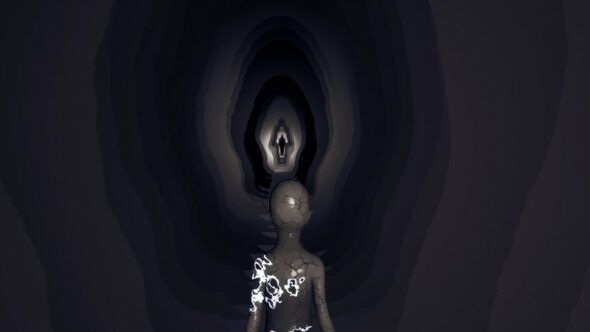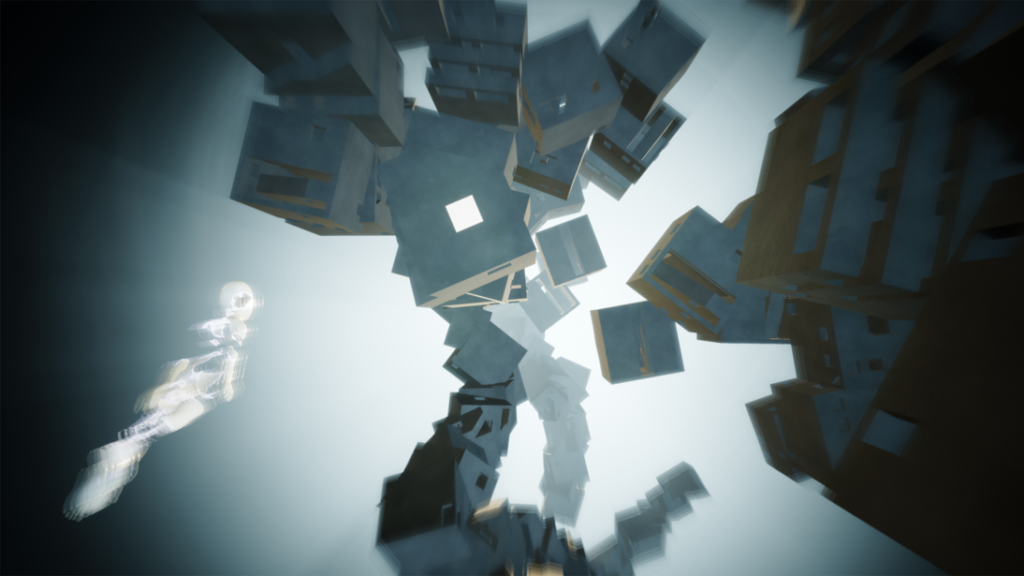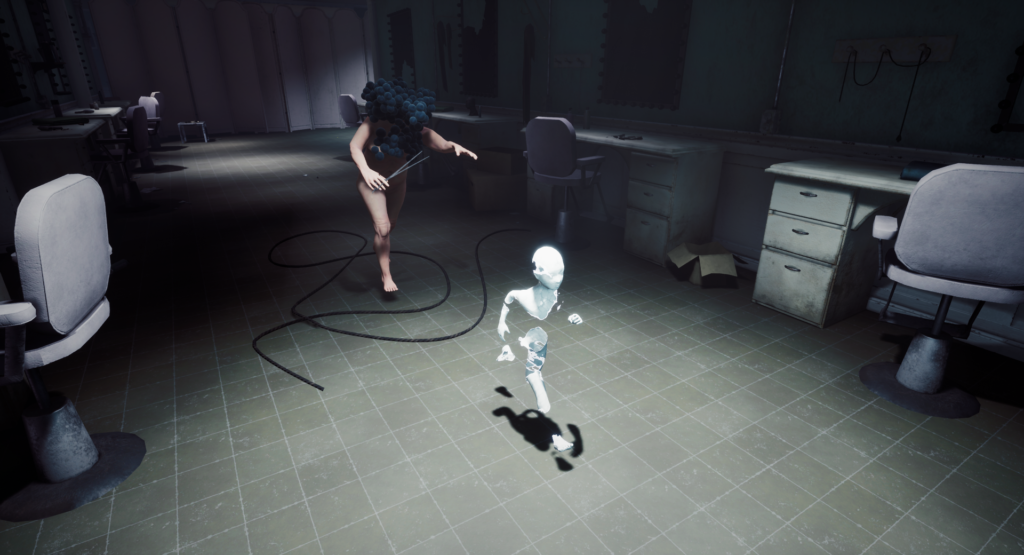
Developer: PLAYMIND
Publisher: PLAYMIND
Platform: PC, PS4, Xbox One
Tested on: PS4
The Inner Friend (PS4) – Review
During childhood development, there are particular memories that stem from a traumatic event, affecting us as we grow old. This ends up in making us feel as though we are not in control, due to these patterns we have bonded to, in order to survive our daily lives. The Inner Friend is a game where the challenge is the experience of facing your fears to overcome these bonds. Game developers PLAYMIND, showcase the internal nightmares that can cause mental suffering into adulthood. In this beautiful chilling game, the premise is set to free yourself by facing your inner child’s trauma. Having already been released on PC in 2018, it was released for PlayStation 4 and Xbox One on the 28th of April 2020. Additional content has been included with the launch of the console platform with a brand-new alternate ending, which is available to PC players to achieve as well after completing a free update. This may be a psychological horror game, though it definitely ticks the mental health genre too.
Story
The Inner Friend begins inside of a gloomy room where you, as the player, seem to be having an out-of-body experience, as you loom over a naked body on a dirty bed. Everything is damaged within the room, the only light infiltrating in is from a broken window, and a beam of light being emitted, where the face of the character should be. This unrevealed person is moving from side to side in pain. There is a final shriek from the faceless man who goes still but twitches slightly while the beam of light now mimics fireflies from his absent face. As the player observing, you are drawn towards the whirling specks of light and enter the subconscious through the missing face. You find yourself teleported as a fractured porcelain boy, with pieces of your body missing, inside a bedroom with a crack in the wall. It is through this crack, that players enter the dreamlike world in order to access the childhood memories and face the nightmares that torment the faceless character on the bed. This introduction sets the tone as to how the story is open to interpretation.
There is an unsettling charm in the style of the narrative in which, The Inner Friend, is unraveled. The story unfolds in a way that allows the player’s curiosity, akin to when you were once a child, to guide your decisions as you play the game. The is no heavy detailed backstory alluding where to go or what must be done in order to achieve ‘X’. However, there is a sense that the backstory could have been more transparent as most of the time you are puzzled as to what is going on and on the other hand, it could have been purposefully delivered primarily as a visually-driven narrative, to set the player’s imagination up to think the worst things possible. This way it effectively gets players more scared as they progress in the game.
Graphics
Visually, the impact of the graphics of the game made the immersion that much easier and believably scary. An ideal combination of fear and beauty was the height of the appeal to the art style. As this is a psychological horror game, there is a general expectation of darkness and shadows, though the quality leaves you feeling appreciative of the environments. The high school location was dark and gave you the impression that this was not an exciting memory of where a particular trauma had to be faced, but just like a proper horror sequence. The monster inhabiting the school was frightening and eerie, yet fascinating. Later when traversing through the art gallery, one can easily forget you are playing a horror game while admiring each art piece. Traveling alone through the gallery with some huge artwork on display still manages to tap into that fear of how little and alone you can feel.
The character you play is designed to look like a fractured porcelain boy, and, as stated earlier, is missing pieces of his body, emphasizing the point of how fragile and incomplete the character you are playing with. PLAYMIND is definitely trying to sell an experience that is open to interpretation to the player, the same way artwork is.
Sound
You have to play this game with headphones as there is no other way to truly experience the desired effect. The audio of this game is superbly executed. The music made sure players felt like they were playing in an eerie surreal representation of childhood trauma. Songs vary for each level and are tailored for the theme of the visuals and action. One particular level in the game, when busy figuring out a puzzle, there is a song very similar to the ‘Stranger Things’ intro and it’s pulled off so well that it doesn’t feel tacky or that the game is trying too hard. The sound of the game was well orchestrated to keep you immersed in the fear factor of the game. The thud of your character’s footsteps would encourage your heartbeat to follow the rhythm when running. It was surprisingly loud, leaving the impression this was intentional. The Inner Friend audio was in tune with the graphics to a point where silence made you feel uneasy.
Gameplay
The Inner Friend is not just simply another psychological horror, adventure, platform game you have to survive. An obvious objective is to beat the game but with a system where if you die and there are no real harsh repercussions. We reckon the experience must have been the developer’s main focus for players. Therefore there is no health bar and if you are caught by a monster you die, respawn and simply are able to try again.
There aren’t many actions to be executed with your controller. R2 is the interactive button, X is to jump, left analog stick is for directions and the right analog stick is for camera adjustment. This is all that is needed to get through the game. The interaction button has multiple functions depending on the scenario, such as calling your friend, holding your friend’s hand, breaking mirrors to access portals, and collecting memories. The controls worked fairly well throughout the game, the only noticeable controller err was while moving with your character and you came to a halt and wanted to go in the opposite direction. The character in the game would first continue the first step in the direction already chosen and then change to the newly desired direction after.
The levels in which you progress through in the game are a varied combination of challenges with puzzles and platforming. It’s difficult to imagine somebody getting frustrated playing this game, as the difficulty of the puzzles become comfortable once you’ve figured out how they work. The same applies to the platforming, if you fall down after reaching a certain level, you just have to get back up. All of this reinforces the building blocks you are expected to learn in your childhood. PLAYMIND ensured they used every aspect to tie into the theme of the game. Challenges in the game refer to the classic games children would play like, hide and seek and Marco Polo. There are items to collect in every level and this helps restore the inner child; the primary objective. PLAYMIND has announced that with the launch to console an alternate ending has been added which can be achieved upon finding all the collectibles. As the game takes about 90 minutes to finish, it would be safe to assume that you could possibly complete the game in three hours, in order to view the alternate ending.
Conclusion
The Inner Friend is a truly satisfying experience. The is game possibly too short for certain players, though there is replayability, at least till you’ve witnessed the alternate ending. Interpretation of the story could have been more transparent, however, as a psychological horror that gets the imagination going, it delivered. Trauma is different for many people and this game will have a way to get you to memory lane or at least have some self-reflection on facing your nightmares. Either way, it will connect you to your inner child. A good experience overall.
The Inner Friend (PS4) - Review,










No Comments